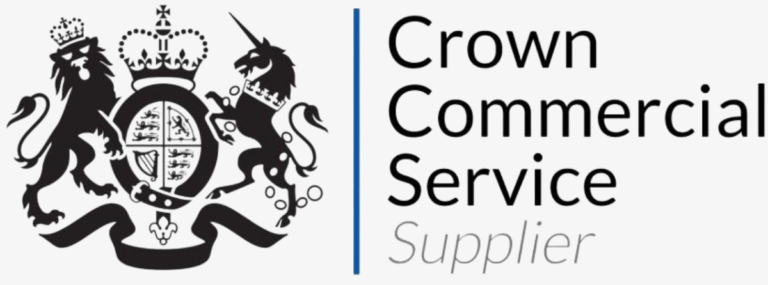
HaloCRM Guides
IT Glue Integration
In this guide we will cover:
- What is the IT Glue Integration?
-Connecting Halo to IT Glue
- Importing Customers
- Importing Assets
- Scheduling imports with the Halo Integrator
- Syncing to IT Glue
What is the IT Glue Integration?
The IT Glue integration allows you to import customers, assets and users from IT Glue into Halo. You can also have a two way sync for client, asset and user data from Halo into IT Glue to update records in IT Glue when these entities are created/edited in Halo. This integration does not sync updates on flexible assets that are outbound to IT Glue. When you have configured the sync you will have a shortcut available against each customer/asset/user linked to IT Glue to open the record in IT Glue.
Connecting Halo to IT Glue
First head to Configuration > Integrations and enable the IT Glue module:
Fig 1. Enable IT Glue module.
You'll find that within this module, you are first required to provide details of your IT Glue URL and API Key. Details on obtaining an IT Glue API key can be found here - please note that this requires the Enterprise subscription plan of IT Glue.
When generating the API key, these URLs should be used as per the IT Glue documentation.
- Base URL for all endpoints and methods is https://api.itglue.com
- Partners with an account in the EU data centre will use https://api.eu.itglue.com
- Partners with an account in the Australia data centre will use https://api.au.itglue.com
Fig 2. IT Glue connection details.
You will also need to set the Default Site that your assets and users will be assigned to if their IT Glue Location has not been imported, or if they are not linked to a Location.
Once you have entered your IT Glue details, click the 'Test Connection' button to ensure Halo can successfully communicate with IT Glue.
Importing Customers
The first step toward configuring the IT Glue integration is to import IT Glue Organisations/Locations into Halo as Customers/Sites, to set this up head to the "Organisations & Locations" tab.
Fig 3. Organisation and location import.
The tables you see in this section are used to establish mappings between IT Glue Organisations/Locations and existing Halo Customers/Sites. This table is primarily used for situations where the name of an IT Glue Organisation does not exactly match that of an existing customer in Halo, for example Tony's Tyres in Halo may be called Tony's Tyres LTD in IT Glue.
Mapped customers (records added to this table) will not have their names in Halo changed upon importing. Non-mapped customers will match based on name. IT Glue Organisations without a location will not be imported into Halo. If an organisation in IT Glue cannot be matched to a customer in Halo (by name or mapping) a new customer will be created in Halo.
Below the mapping tables are some additional fields.
Fig 4. Customer/site/user import settings.
Top Level for Customers- This field can be used to apply a top level to new customers created from IT Glue. This will only apply to new customers created from the integration, allowing you to later change the customer's top level on the Halo side.
Customer Type - You can use this to allocate a specific customer type to customers created via IT Glue imports, or you can use the IT Glue Organisation Type to set the customer type. Customer Types are amended via heading to Configuration>Users>Customer Types
Active Statuses - Here you can choose the statuses organisations need to have in order to be active in Halo. Any organisations that have a status other than one set here will be made inactive.
Don't sync address data between Halo and IT Glue - When enabled address data in Halo will not update locations in IT Glue and addresses against locations in IT Glue will not update Halo sites. Used when you have different addresses logged against IT Glue and Halo.
Once you have completed the customer and site mappings and setup you can import organisations/locations using the 'Import Organizations and Locations' button. Contacts under each location can also be imported as users in Halo using the 'Import Contacts' button.
Flexible Asset Imports
Once you have imported your Organisations from IT Glue into Halo, you are ready to configure flexible asset imports. To do this head to the "Assets" tab.
Fig 5. Asset import setup page.
The first thing you will need to do here is set an asset matching field. This field is used to match assets to existing records. If matched, the record will be updated, otherwise a new asset will be created. By default, the IT Glue ID will always be checked first.
Flexible assets of a certain type are imported into Halo via establishing a mapping between the IT Glue flexible asset type & the Halo Asset type. This is achieved via adding to the 'Asset Type/Field Mappings' table.
Once you have added an IT Glue flexible asset type - Halo asset type mapping, you can add field mappings which will allow you to determine what information you would like to import from IT Glue.
Once you have configured your mappings you can import flexible assets using the 'Import flexible assets' button.
Configurations Import
Similarly to flexible assets, configurations can also be mapped and imported. You will need to map configuration types to Halo asset types to determine what Halo asset type IT Glue configurations are created under. Once you have mapped an asset and configuration type you can configure field mappings for these types to determine what information you would like to import from IT Glue.
Fig 6. Configurations imports.
Now you will need to complete status mappings to link a Halo status to an IT Glue status. Configuration items with this status in IT Glue will be created in Halo with the mapped status.
Push all changes to mapped Configuration Fields from Halo to IT Glue: When enabled, configuration fields in IT Glue will be updated when the mapped Halo field is updated. If this is disabled only the following fields will be updated when changes are made to the mapped Halo field: archived, asset_tag, notes, purchased_at, restricted, serial_number, warranty_expires_at, mitp_device_expiration_date, mitp_end_of_life_date
Push Organization and Location changes to IT Glue (v2.204+): When enabled, if an asset moves to a different site/customer in Halo this will update the associated configuration in IT Glue. Allowing you to manage the location of assets (configurations) in Halo and have these changes reflected in IT Glue.
Once your mappings are configured you can import configuration items using the 'Import configurations' button.
Scheduling imports with the Halo Integrator
The importing of Organisations/Locations, flexible assets, configurations and contacts can be configured to run on a scheduled basis via the Halo Integrator. To enable this, simply check the 'Enable the Halo Integrator for the IT Glue Integration' checkbox.
Fig 7. Entities to import.
You can then select the entity/entities you would like to import.
Note: Only entities that have been updated in IT Glue since the previous import will be retrieved.
Syncing to IT Glue
Two way syncing can be enabled for clients (customers), assets and users. To do this head to the 'Syncing to IT Glue' tab and add the entities you would like to sync in the 'Entities to Sync' field.
Fig 8. Syncing to IT Glue.
This will then attempt to create/update Organisations, locations, assets and users whenever respective entities are updated in Halo.
Active Organization Status - Here, you can select the Organisation status to be used in IT Glue for when a customer is made active in Halo.
Inactive Organization Status - Here, you can select the Organisation status to be used in IT Glue for when a customer is made inactive in Halo.
Sync Customer and Site name changes to IT Glue - When enabled changes to customer and site names will be synced to IT Glue.
Open Record in IT Glue from Halo
Once you have completed your setup you will have a button appear against customers, sites and assets that are linked to IT Glue. This can be used to open this record in IT Glue. For an entity to be 'linked' to IT Glue it either needs to be imported from IT Glue or syncing to IT Glue.
Fig 9. Open entity in IT Glue button.
Popular Guides
- Asset Import - CSV/XLS/Spreadsheet Method
- Call Management
- Creating Agents and Editing Agent Details
- Creating API Applications
- Departments and Teams
- Halo Integrator
- Importing Data
- Multiple New Portals with different branding for one customer [Hosted]
- NHServer Deprecation User Guide
- Organisation Basics
- Organising Teams of Agents
- Step-by-Step Configuration Walk Through



